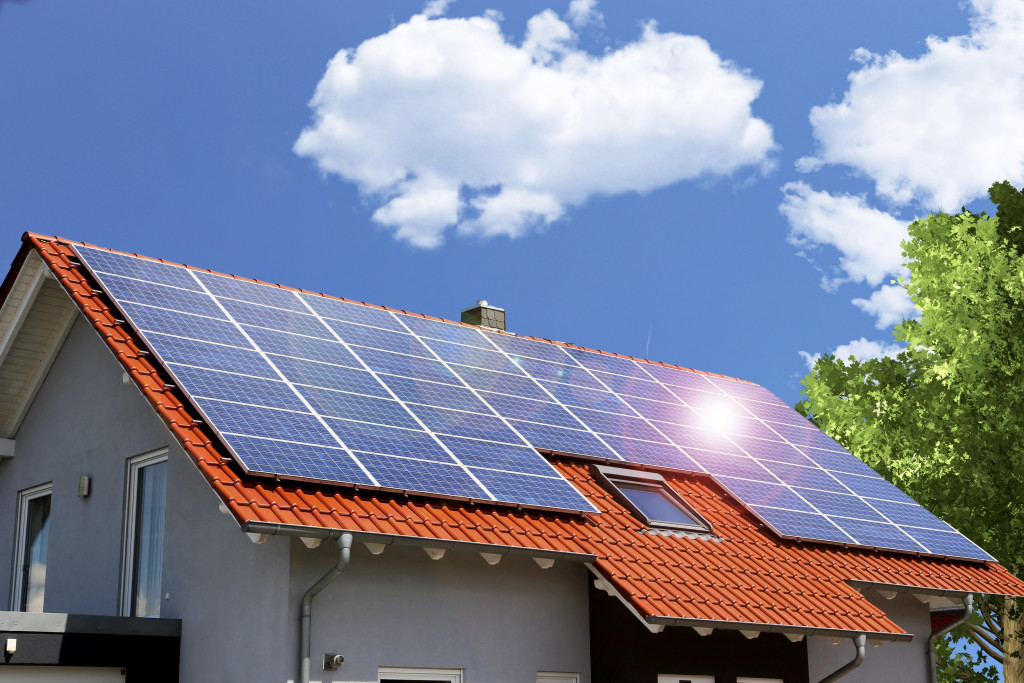You and your partner have decided to build the home of your dreams. Congratulations! This is a huge milestone. Not only will you get to customize every detail of your home to perfectly suit your needs, but you’ll also get to do so in an eco-friendly and sustainable way. Here are a few ways to make your dream home a reality without harming the environment.
Use recycled materials whenever possible
You can help the environment by using recycled materials to construct your home. Recycled materials are good for the environment because they reduce the amount of waste produced.
Also, recycled materials can be used to create new products, which reduces the need to extract new raw materials from the earth. Using recycled materials also saves energy since it takes less energy to process recycled materials than it does to process new raw materials. Some examples of recycled materials that can be used in construction include recycled glass, recycled aluminum, and recycled lumber.
By using recycled materials, you can help to reduce pollution and conserve natural resources.
Use wood
You can use wood to construct a home in an eco-friendly way. Wood is a renewable resource, so it doesn’t strain the environment the way that using non-renewable resources does. If you use wood, be sure it was sustainably sourced and that no damage was done to the environment in harvesting it. Look for the Forest Stewardship Council, or FSC, label. This label indicates that the wood was sourced from a well-managed forest using sustainable logging methods
As a bonus, wood adds a clean rustic or Nordic aesthetic that’s been popular in home design for the past few years. Elements like hardwood windows, wooden accent walls or fixtures can look clean but not cold or sanitized. These not only look good, but also environmentally friendly. In addition, wood is an excellent insulator, so it can help to keep your home warm in the winter and cool in the summer.
Using wood to construct your home can help you reduce your carbon footprint and live more eco-friendly.
Use water-efficient fixtures and appliances
You can save water (and money) by using water-efficient fixtures and appliances in your home. Shower heads, for example, use as little as two gallons of water per minute compared to the standard seven-gallon-per-minute shower head. Low-flush toilets can also save water, using as little as 1.6 gallons per flush.
Additionally, you can use energy-efficient appliances, such as dishwashers and washing machines, which use less water and energy than their conventional counterparts. By making these simple changes, you can reduce your home’s water footprint and help to protect the environment.
Install solar panels

When you’re ready to construct your dream home, you’ll want to consider all your options for making it eco-friendly. One important way to do this is to install solar panels. Solar panels take advantage of the natural heat and light of the sun to generate electricity, which can power your entire home.
In addition to being environmentally friendly, solar panels can also save you money on your energy bills. With the initial investment in installation, you’ll be able to enjoy years of free or reduced-cost electricity. Plus, you may even be eligible for government incentives or tax breaks. So when you’re ready to build your green home, be sure to install solar panels.
Use low-VOC paint and finishes
You can use low-VOC paint and finishes. VOCs are volatile organic compounds that are emitted as gases from certain solids or liquids. These emissions can have short- and long-term adverse health effects. Paints and finishes are a major source of VOCs, so using low-VOC options can help reduce indoor air pollution.
Additionally, many low-VOC paints and finishes are just as effective as their traditional counterparts, so you don’t have to sacrifice quality for sustainability. When choosing paint or finish products for your home, look for those labeled “low VOC” or “no VOC”. By taking this simple step, you can help create a healthier home environment while also supporting eco-friendly construction practices.
Use energy-efficient appliances
This will help save you money on your utility bills and will also help to conserve energy. There are many different ways to make your appliances more energy-efficient. You can also choose to use appliances certified by the Energy Star program. These appliances are designed to meet strict energy-efficiency standards, and they can help you save money on your utility bills while also reducing your carbon footprint.
These are just a few of the ways that you can construct a home in an eco-friendly way. By using recycled materials, wood, water-efficient fixtures, solar panels, low-VOC paints and finishes, and energy-efficient appliances, you can help reduce your impact on the environment and build a sustainable, green home.
